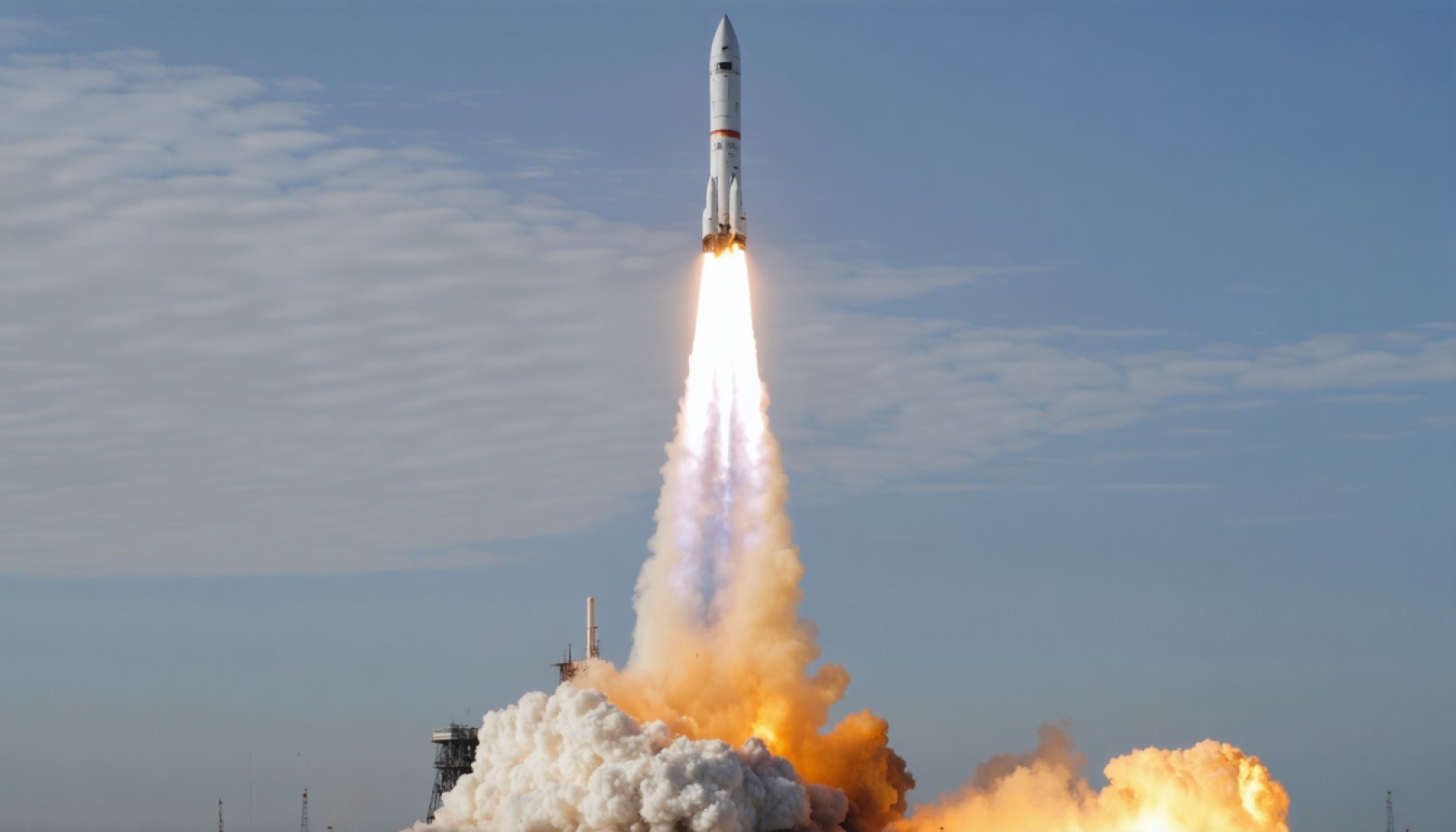- The Spectrum rocket launch in Andoya, Norway, aimed to boost Europe’s competitive presence in space exploration.
- Despite meticulous preparation by German start-up Isar Aerospace, the rocket failed shortly after launch, highlighting the challenges of space exploration.
- This was the first privately financed orbital rocket launched from continental Europe, marking a significant milestone.
- The unsuccessful attempt provided valuable data, integral to future developments and progress in aerospace technology.
- The event underscores Europe’s commitment to becoming an independent force in the global space arena.
- Failures in space exploration offer lessons in resilience and innovation, essential for overcoming obstacles and achieving eventual success.
- Europe’s space aspirations continue, driven by the knowledge gained through every trial and error.
On a freezing day in isolated Andoya, Norway, a bold leap towards a European space renaissance came crashing down dramatically. The Spectrum rocket, a project heralded for its innovation and potential to catapult Europe into competitive space exploration, succumbed to the raw power of physics and fate. As the engines roared to life, hopes soared; yet, those dreams turned to ash mere seconds later when the rocket faltered and spiraled back to Earth in a blaze.
This ambitious venture by Isar Aerospace, a dynamic German start-up, was the first privately financed orbital rocket to launch from continental Europe, marking a watershed in the continent’s aspirations to craft its own path in the cosmos. Undeterred by the biting Arctic winds, engineers had meticulously prepared for months. The anticipation was palpable, the stakes unequivocally high.
Exploding on impact, the Spectrum‘s shards were a stark reminder of the unforgiving nature of space exploration. The launch, witnessed globally via a live stream, had captivated audiences, eager to see Europe carve its niche in an arena dominated by tech giants from the United States and burgeoning Asian powers.
While the vehicle tragically didn’t complete its mission, every launch is a data goldmine—a stepping stone to mastery. Daniel Metzler, Isar Aerospace’s co-founder, had emphasized the value of the experience—a sentiment echoing through the annals of aerospace history. Trial by fire fuels progression, and every setback fortifies resolve.
Previous attempts have shown that breaking earthly bonds to touch the stars requires relentless effort and resilience. Although the skies shunned the Spectrum momentarily, the data it gathered could illuminate the path forward.
As Europe stands on the cusp of a new space age, this mishap serves both as a humbling jolt and a catalyst to galvanize engineers, scientists, and entrepreneurs on the continent. The quest for independent space exploration is a marathon, not a sprint. After all, each failure is a chapter in a much larger story—a story of perseverance, innovation, and eventually, triumph.
A Bold European Venture: The Spectrum Rocket’s Launch and Beyond
Introduction
The Spectrum rocket launch from Andoya, Norway, marks a significant attempt by Isar Aerospace to propel Europe into the competitive space race. Amidst the Arctic chill, this colossal endeavor ended in a fiery spectacle, yet it unfolds new chapters in Europe’s quest for cosmic exploration.
Understanding Spectrum’s Significance
Isar Aerospace’s Spectrum project represents a unique milestone as it was the first privately funded orbital rocket to be launched from continental Europe. This innovation aimed to diversify and bolster European space capabilities traditionally dominated by governmental bodies.
Key Features of Spectrum Rocket
– Innovative Design: The Spectrum rocket is designed to carry small to medium payloads to low Earth orbit (LEO).
– Cost-Efficiency: Spectrum aims to deliver affordable space access solutions, which are crucial for startups and smaller nations in exploring space capabilities.
– Environmental Friendly: Isar Aerospace places emphasis on sustainability, aiming for reduced emissions and a smaller carbon footprint.
Analyzing the Setback: Learning from Failure
Despite its failure, the launch is instrumental in gathering essential data:
– Telemetry Data Analysis: Information from onboard sensors guide improvements in engine performance and structural resilience in future projects.
– Stress Testing: Real-world tests expose flaws and limitations that computer simulations may miss, providing valuable insights for future revisions.
Why Europe Needs Independent Space Exploration
– Decreased Dependency: An independent program reduces reliance on external spaceports, enhancing strategic autonomy.
– Economic Benefits: A homegrown space industry stimulates economic growth and creates tech opportunities across Europe.
– Inspiring Innovation: Encourages start-ups and innovation hubs to participate in aerospace advancements.
Real-World Use Cases
– Satellite Deployment: Spectrum could play a crucial role in launching satellites for telecommunications, weather monitoring, and scientific research.
– Space Tourism Potential: As technology matures, smaller orbital rockets might pioneer approaches to accessible space tourism.
– Defense Applications: Enabling rapid deployment of defense satellites critical for maintaining European security and surveillance.
Isar Aerospace’s Competitive Edge
– Market Forecast: The small satellite launch market is expected to grow exponentially, with strong demands anticipated from commercial and governmental sectors.
– Rapid Iteration Culture: Emphasizing rapid prototyping and iteration, Isar is poised to quickly adapt and overcome technical challenges faster than traditional space agencies.
How-To Overcome Setbacks in Aerospace
1. Debrief and Analyze: Conduct thorough reviews involving all team members to gather diverse insights on failures.
2. Simulate Varied Scenarios: Use advanced simulations to anticipate issues, followed by real-world testing.
3. Collaborate with Experts: Engage with academia and seasoned engineers for diversified expertise.
4. Iterate Designs: Focus on prototyping new fronts iteratively to refine designs based on continuous learning.
Conclusion: Actionable Recommendations
– Focus on Resilience: Develop a culture that reframes failures as stepping stones for innovation.
– Enhance Collaboration: Leverage partnerships with other space agencies for shared learning and resource optimization.
– Communicate Transparently: Keep the public and investors informed to sustain interest and trust in the project’s long-term vision.
With challenges come opportunities. As Europe advances on its space odyssey, each hurdle only sharpens its capabilities and resolve. Stay informed about future breakthroughs at Isar Aerospace.










